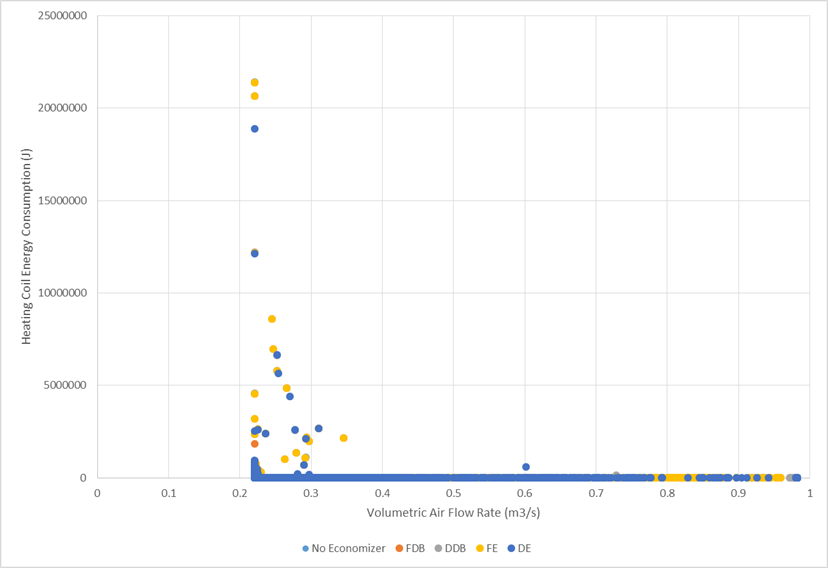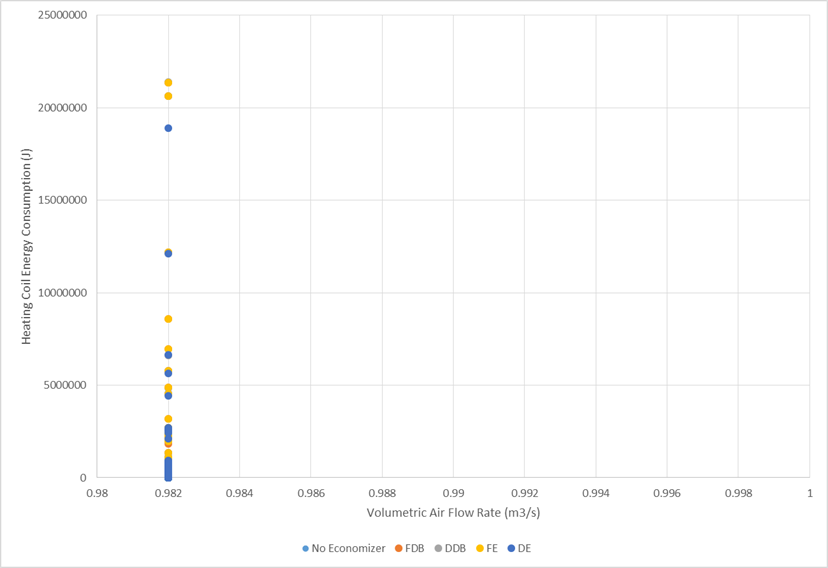Packaged Rooftop with air economizer and gas heating (question about heating consumption)
Hi all,
I am solving a research problem that involves running a model at the same region and different economizer controls. I noticed that the heating gas consumption changes from one economizer type to the next, even though I believe from the knowledge I have the economizer control type should not affect heating gas consumption. I'm either wrong about this or there's something I need to change in my idf file.
I appreciate your help.






